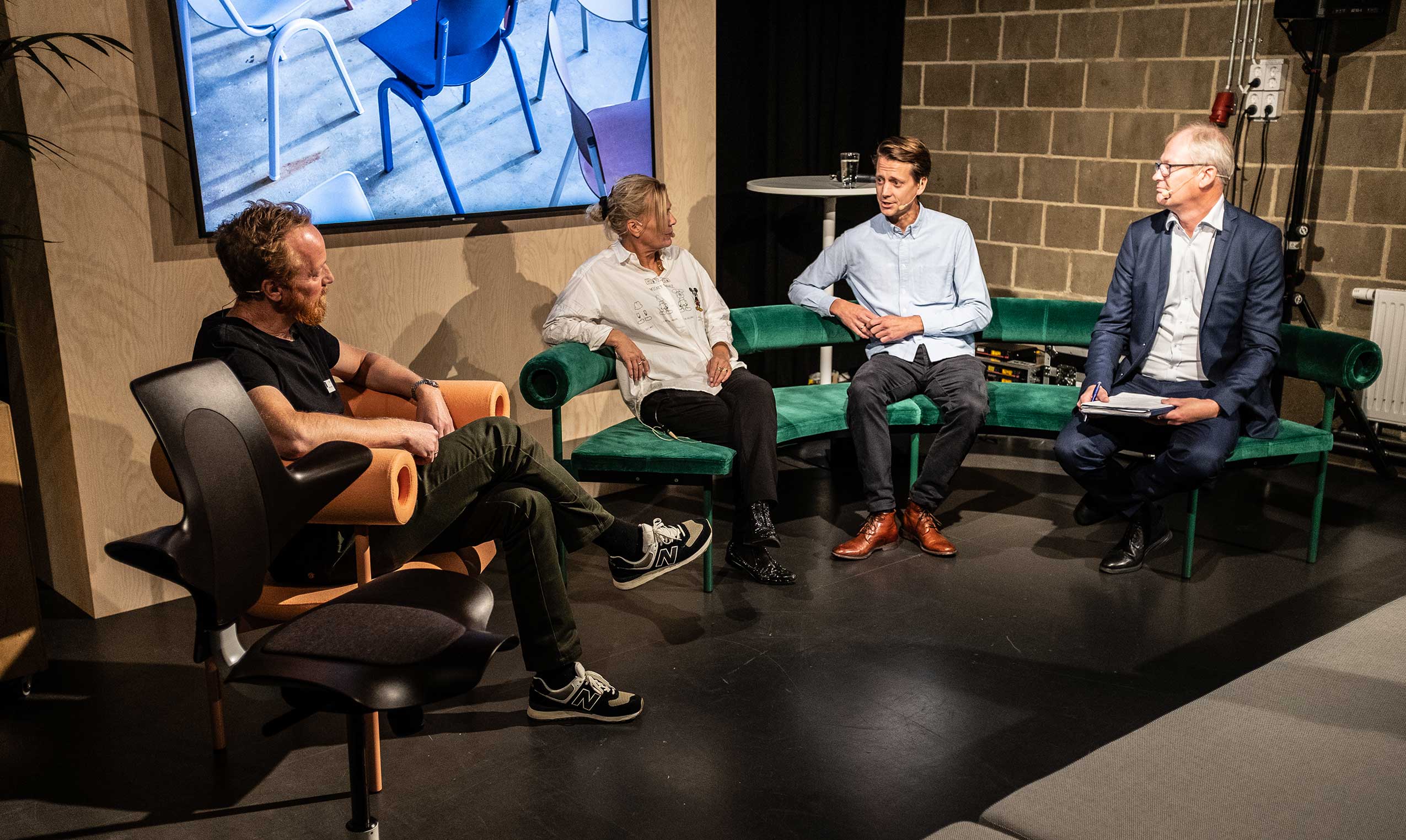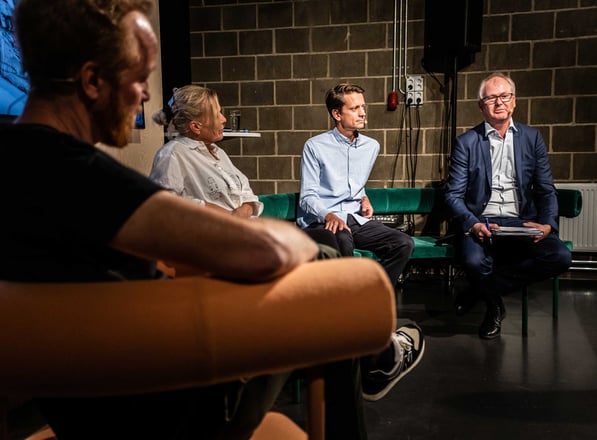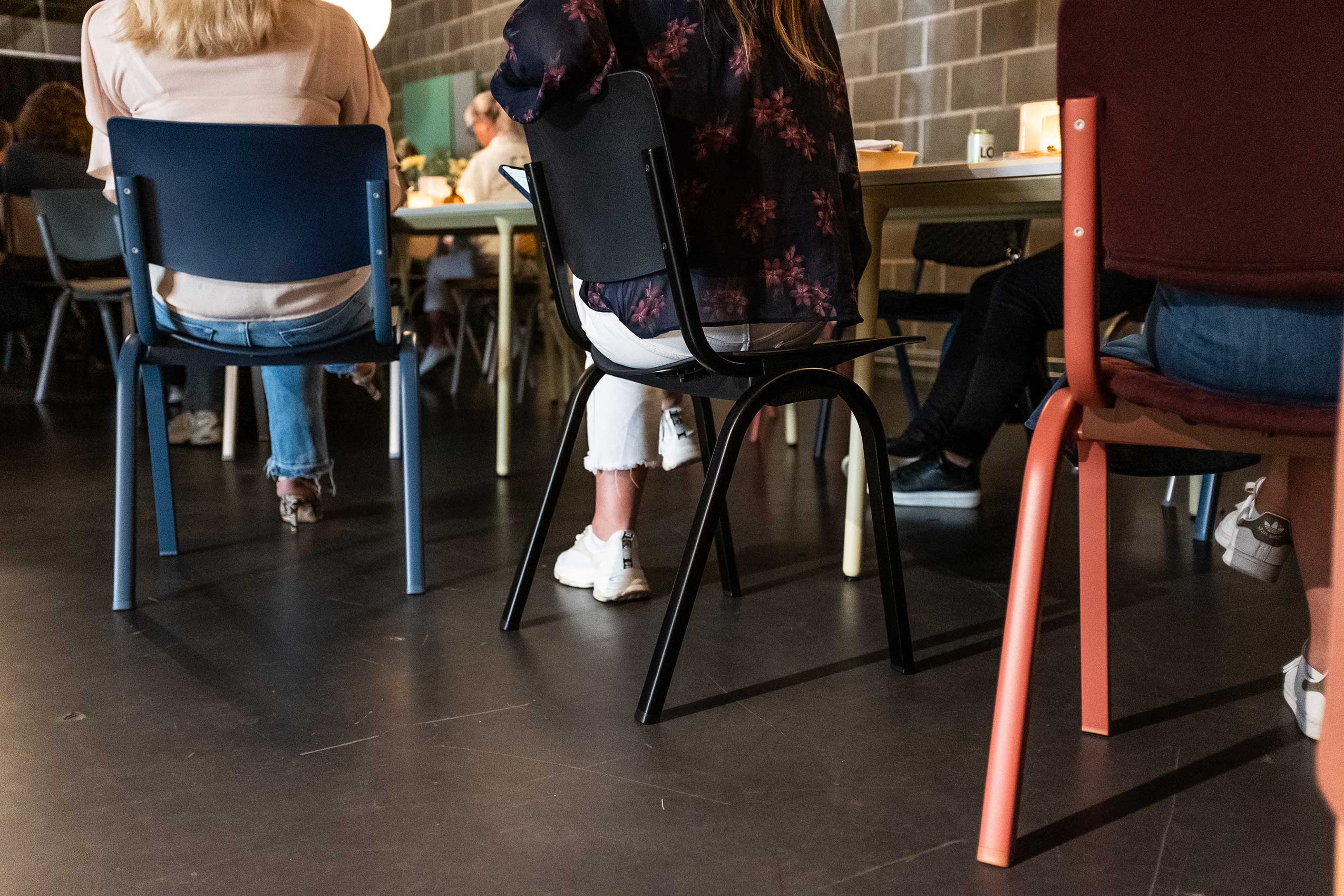
Why collaboration is key to achieve 2030 Sustainable Development goals
Industry experts from metal, plastics, and fabrics weigh in on the importance of collaboration in the world of recycling, and the implications it has on achieving net zero by 2030.
- Sustainability
- Stockholm Furniture Fair
- Events
- Corporate

In 2015 all United Nations member states adopted the 2030 Agenda for Sustainable Development – “a shared blueprint for peace and prosperity for people and the planet, now and into the future”. A central tenet of this decree is a reduction in carbon emissions and pollution to stave off catastrophic global warming. A recent publication from the World Economic Forum suggests that we are on a knife edge when it comes to achieving these aims. So what needs to be done?
Earlier this month Flokk held a lively discussion with three industry experts on how the manufacturing industry can play a significant role in lowering carbon emissions, and how collaboration – from designer to consumer – is crucial if we are to improve our global efforts.
Collaboration
Gitte Johanne Buk Larsen is the Creative Director, at Aage Vestergaard Larsen a recycling company with over 50 years of heritage in recycling, most notably plastics. “We work alongside companies, including Flokk, where we try to close the loop in a circular economy. It takes all our partners to make this happen from the manufacturers of a detergent and shampoo, the plastic producing company, the presourcing facility… We are all in the loop, communicating, ensuring that the right materials are used in the right way, and whenever you make a mistake, its just picking up the phone and sharing the problems. Because when you mix material, even accidentally, you downgrade it and you can’t really recycle it. If that happens you ruin the waste stream completely.”
For companies like Aage Vestergaard Larsen having this level of collaboration is vital to be able to create reusable plastic efficiently and as good as virgin. It is also crucial for the environment, meaning more plastic can be recycled with less incinerated or put in landfill.

Whilst plastic recycling has significant room for improvement, Aluminium recycling is a mature industry, with a rate of over 90% in some countries, and around 75% of all aluminium production still in use. Norwegian Aluminium producers Hydro are pioneers when it comes to recycled aluminium with their CIRCAL aluminium made from 75% recycled aluminium.
Asle Forsbak, Communication Director at Hydro also notes the need for collaboration, highlighting the role that designers have to play.
“Designers can sometimes make our lives very difficult. If product materials cannot be separated when they are at their end of life, then they are not really circular. Our biggest struggle now is to get enough used aluminium scrap that is possible to recycle. There is enough scrap out there, but finding reusable scrap is really the challenge. If every product was well designed, to be easily dismantled sorted and recycled and we could reuse almost all of it.”
This blending of materials is no more apparent than in the textile industry, the biggest industry in the world. Frode Svarstad is a Textile Engineer at Gudbrandsdalens Uldvarefabrik, who mainly specialise in wool:
“The textile industry is huge and whilst wool represents about only 1%, we still want to recycle more of the wool based material in our mills, but it has to be collected and separated and organised. If it they are blended with other fibre types then it’s impossible to separate them. And whilst some blending is for technical reasons, to make a stronger yarn, for example, the other reason is for appearance.”
This can often be the biggest challenge when it comes to making sustainable choices – the choice of the consumer. However, the tide is turning.
Asle: “As a company, we have taken sustainability seriously for a long time now. It has been our position even before any of our customers asked for it, because we saw that this would be a global trend going forward. We have so many examples over the past few years now that big and small companies see that the final consumers demand so much more from the sustainability profile of a product, which makes our recycled aluminium very attractive to manufacturers.”
Frode: “Sustainability has been in our genes since the beginning. Based on Norwegian wool originally, using clean water, all processes in-house, and clean electricity. We started with iso 1401 in 1995 perhaps it was important for us, but too early for the market to realise it. In 1995, our customers didn’t want to pay extra for that. But today? We are increasingly aware that our customers are appreciating our eco-products, and we are seeing a lot more cooperation.”

Stored Energy
In today’s world, the allure of recycling materials is even stronger, especially with the high energy prices the world is currently experiencing.
Gitte: “My father started this recycling company back in 1972, highly influenced by the oil crisis at the time, and today we are seeing a similar situation in oil prices, directly influencing the cost of plastic. For a very long time now recycled material has actually been cheaper than virgin, and it will only get more so.”
Asle: “Plastic and metals are very energy intensive – it’s so expensive to produce new stuff so why don’t we use what we already have? We have stored so much energy in waste materials. Aluminium takes 5% of the energy to recycle compared to making new aluminium.”
“To look at the numbers, the average carbon footprint per kilo of aluminium is around 17 kg of Co2 that you emit into the air. If you replace the energy with renewable energy, you reduce it by 80%. And then going down to zero Co2, you would need scrap - that’s the only way. If you have 100% post-consumer scrap and 100% renewable energy, you can get very close to zero, which is the dream of any designer.”
“But that requires that we get good materials, so it’s actually the designers and manufacturers of products that need to be aware of that responsibility. When a product - like a chair - is designed, the materials need to be easily separated and recycled to make our circular economy work.”
Gitte: “What appears to be a gloomy outlook has this other perspective. High energy prices put a higher value on the stored energy in waste materials. Now we have customers coming to us. Back in the day, people really weren’t interested that they were saying they used recycled materials, but the public opinion has changed and everybody wants to be able to say it.”
Asle: “All countries are having this 2030 deadline – some will succeed and some won’t, but I think it is the industries that really have to help push forward, all together.”
Excerpts are taken from a panel discussion held by Flokk during Stockholm Design Week on Wednesday 7th September. A special thanks to our panellists who took part in the talk, and to those who attended the discussion in person!
This might also interest you
OFFECCT x ECAL: shaping the future of acoustic furniture at 3daysofdesign
At 3daysofdesign, OFFECCT and ECAL unveil bold new visions for acoustic...
Flokk release 2024 Annual Report
We’ve just released our Annual Report. At its core is a letter from our...
Flokk at Clerkenwell Design Week 2025: Every. Piece. Counts.
This May, Flokk returns to Clerkenwell Design Week with a new exhibition...